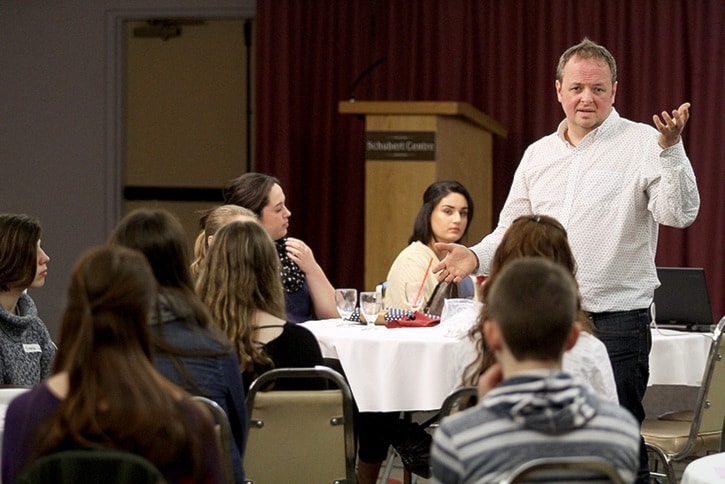Aristotle once said “educating the mind without educating the heart is not educating at all.”
Project Based Learning (PBL) is a modern teaching technique that revolves around the idea that learning should not be about what teachers cover but what students discover. This concept has been a topic of great discussion and controversy amongst educators across B.C., but who better to critique the validity of the practice than the students of traditional teaching practices themselves.
At the recent Okanagan Region Forum at the Schubert Centre, a group of School District 22 Student Voice advocates used their high school experiences to answer the question, “is Project Based Learning beneficial and if so, how do you want to see it implemented?” The responses were immensely positive, and the exceptional ideas conceived will not go wasted.
Student voice revolves around the belief that individual student’s opinions, ideas and perspectives should be valued. In B.C. this voice is encouraged through school clubs, regional teams and provincial forums.
All of the gathered information, along with those of similar conferences from across the province, will go to the provincial student voice forum in Richmond in April.
Planting the seed and fostering the enthusiasm regarding the inventive style of learning was district curriculum coordinator Paul Britton. He identified the main objective of project based learning with a captivating story from his primary school years, which examined the memorable moments of his schooling. Oddly, but not uncommonly, these did not include any of the curriculum. The only class Paul remembered for more than just the class clown and quirky teachers was a basic business education class. What stood out was that this class applied all prior learning and required superior rationale for the creation of his own business pitch. From here, Paul disclosed the interconnectedness of every subject matter, along with the importance of presenting students with a challenging problem or question that relates to the real world. This has grown to be of even larger importance with the progression of technology, compelling students to exceed their learning beyond the typing of a Google search.
The challenging problem or question is the foundation for PBL. Authentic application of the skill(s) being taught is the next building block toward the final goal. During this process the teacher takes on the role of project manager. Creating checkpoints and encouraging kids to move forward, rather than lecture. Student voice and choice ensures kids will not reject PBL ideas and revert back to the test-based learning tactics out of fear of increased work load.
The final cornerstone of the equation is reflection. Reflection is said to be the number-one beneficial practice in education. Not only does it statistically positively impact student performance, it encourages risk-taking and discovery.
Traditional education practices revolve around the uninspired system of introduction of topic, learning of topic and test on topic. PBL follows an offbeat version of this formula; it begins with a project launch, followed by workshops, research, labs and lectures, followed by benchmark reflections dispersed throughout the program. During these reflections, a major component is ensuring the practical application of the prototype or idea created. This encourages the knowledge gained to be a portion of the greater collective knowledge through public display to share what has been learned.
Although Paul effortlessly sold the idea of PBL to the audience, the benefits and negatives were discussed in groups before potential resolutions were envisioned. The positives were overwhelming, and all agreed that the more profitable teaching style would be what was portrayed as the “trampoline of learning,” in which instead of bouncing from one subject to the next on separate trampolines, all the subjects are placed on a big trampoline and weight is set in the middle so all content falls in to each other.
The worries, however, revolved around the fear that if not implemented properly, the format may lack structure and cause frustration due to inadequacy of support.
Other discussions led to fruitful exchanges of ideas. All members are confident that B.C. will eventually shed its cultural residue and adopt this learning practice.
Kate Healy is a Grade 12 student at Vernon Secondary School.
